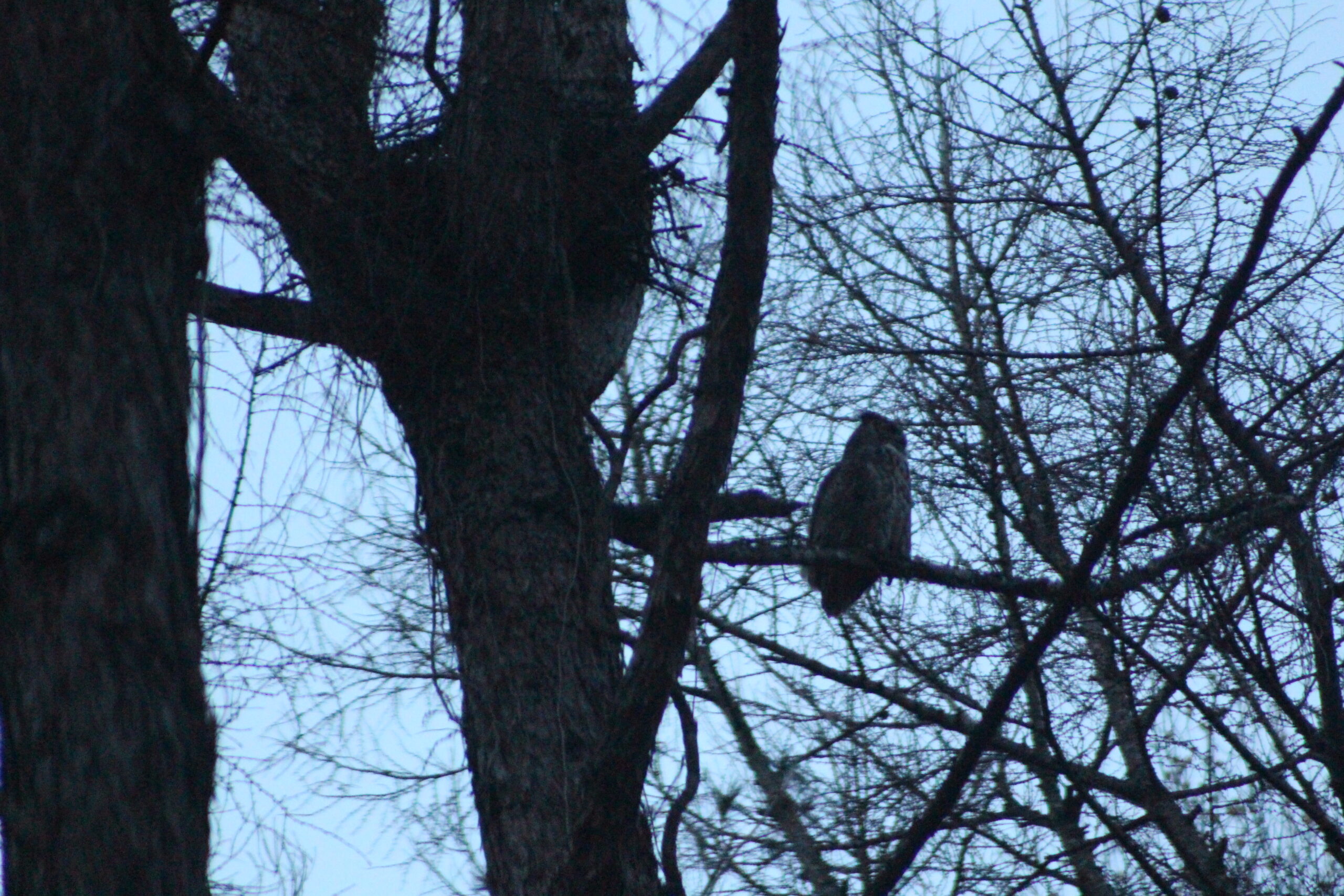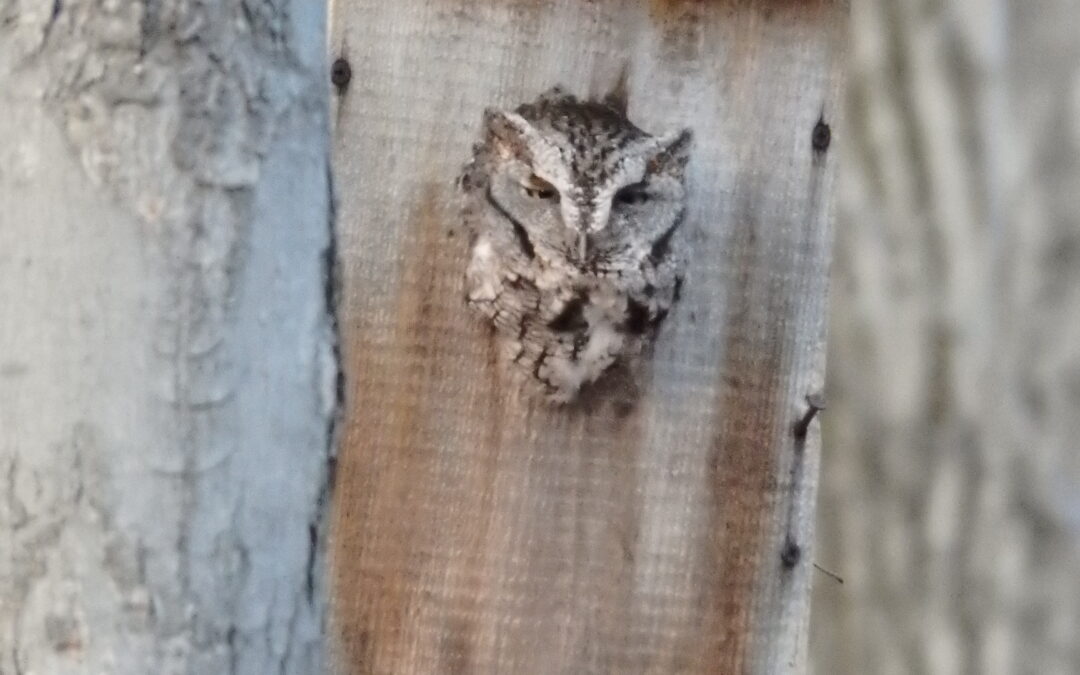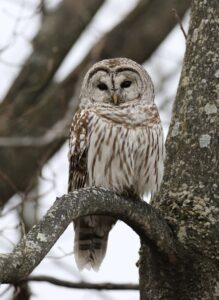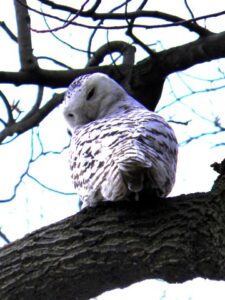Winter time is not typically thought of when people think of birds laying eggs and nesting. But for three of New Jersey’s permanent resident owl species that live at Merrill Creek Reservoir, the Great Horned Owl, the Barred Owl and the Eastern Screech Owl, winter is time to establish territory, find a nest site and start a family!
All three of these owl species do not build a nest. Instead, the Great Horned Owl typically uses old nests of other bird species like Red-tail hawks or Crows. A Great Horned will also nest on top of old squirrel nests and sometimes even nest in barns and on ledges. But if you find a Great Horned Owl – you are not likely to see other owl species in the area, as the Great Horned (our largest owl species in NJ) will attack and kill other owl species in its territory.
The other two species, the Barred Owl and the Eastern Screech Owl, are cavity nesters – meaning they will use hollows in trees and even nest boxes, provided the nest box opening is big enough for them to enter. These two owl species will lay their eggs on whatever debris is at the bottom of the nesting cavity, such as woodchips, twigs, leaves, etc.
Over the years four other owl species have been observed at Merrill Creek Reservoir. They are the Snowy Owl, Long-eared Owl, Short-eared Owl and the Northern Saw-whet Owl. All of these species do not breed in NJ, rather they come down from the North to spend the winter months here in their respective habitats. NOTE: the Snowy Owl was only observed once at MCR in late 2011, (but it stayed at MCR till March of 2012), and the species not been seen again at MCR since, although they do frequent NJ during the winter months.
As predators, owls play an important role in the environment by controlling small animal populations. In fact, according to the Wildlife Conservation Society, “a family of 5 owls can consume about 3,000 rodents in one breeding season, thus helping reduce damage to crops, as well as, help maintain the natural food chain.




